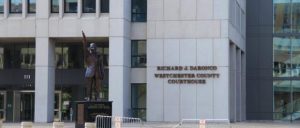 New York State has passed several laws that protect homeowners who may be subject to a foreclosure action. One of these laws requires that a settlement conference be held for a homeowner when his primary residence is in foreclosure, due to his failure to pay their mortgage, taxes, or other amounts due to the lender.
New York State has passed several laws that protect homeowners who may be subject to a foreclosure action. One of these laws requires that a settlement conference be held for a homeowner when his primary residence is in foreclosure, due to his failure to pay their mortgage, taxes, or other amounts due to the lender.
Prior blog posts have discussed what may occur at a foreclosure settlement conference. We recommend engaging experienced counsel to appear at the foreclosure settlement conference. At this conference, attempts will be made, with the Court’s assistance, to resolve this matter, often through a modification of the existing mortgage.
However, there may be cases in which the parties are unable to reach a resolution in the settlement part. There may be several conferences held, but, for various reasons, the parties are unable to reach a resolution. What happens at that point? The first step is that the Court will generally release the case from the settlement part. Under the law, when the case is in the settlement part, all litigation, including motions, are “stayed” by the Court, which means that no litigation can occur in the action until the case is released by the settlement part. Depending on the overall circumstances of the case, the settlement part may order that the stay on litigation be extended for a period of time after the case is released, generally 30, 45, or 60 days. This may give the party being foreclosed additional time to negotiate a resolution, or, if there is sufficient equity, to sell the property and use the proceeds to pay off any amounts due, thus ending the foreclosure suit.
If the situation cannot be resolved during the stay of litigation, the case will proceed through the Court system after the stay period expires. Many of our clients’ foreclosure cases are litigated in Westchester County. After a case is released from the Foreclosure Settlement Part of Westchester County Supreme Court, it is assigned to the Mandatory Appearance Part, also known as the MAP Part. In the MAP Part, the Court will assign a date when the parties are required to appear. The purpose of these appearances is to advise the Court of the status of the case. The parties will generally meet with a Court Referee, who will set deadlines for the party bringing the action to proceed with the case in order to get it ready for trial.
The plaintiff, usually a lending institution, may at this point file a motion to obtain a judgment of foreclosure and sale. When filing a motion, the plaintiff’s attorney must also file a Request for Judicial Intervention, also known as a RJI. Once the RJI is filed, the action will be removed from the MAP Part and assigned to a Judge [link], also known as an Individual Assignment Part, or IAS. The case is now under the auspices of a particular Judge, who is randomly assigned. All motions are now returnable before the Judge assigned, subject to that Judge’s individual rules. Again, we recommend retaining experienced counsel who is familiar with the Judges and their Court rules.
Although the parties may still negotiate a settlement at this point, once the case is before a Judge, it is usually resolved through motion practice. If the plaintiff fails to obtain a judgment through a motion, the case will proceed to trial. At the trial, which is held without a jury, the plaintiff must prove its case in order to obtain a judgment of foreclosure and sale.
Foreclosure actions may take several years to move through the New York State Court system. Whether you are a lender or borrower in distress, our firm is available to assist through the process.
 New York Real Estate Lawyers Blog
New York Real Estate Lawyers Blog

